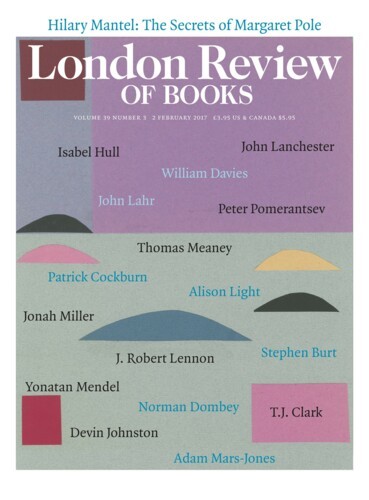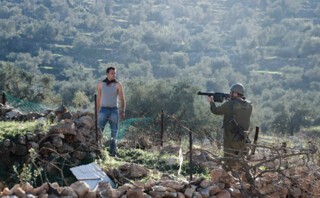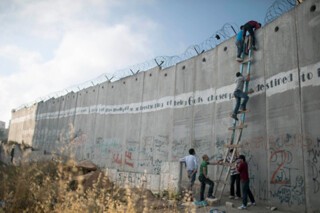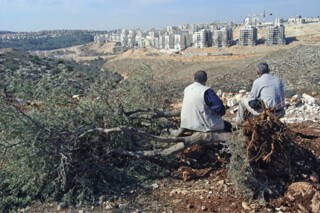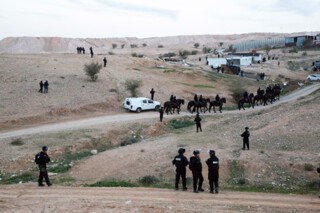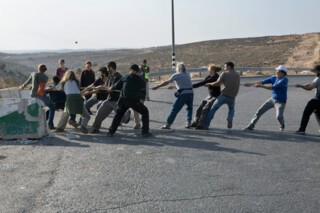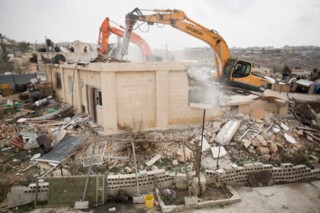The Israeli government says there is no occupation; the documentary group Activestills shoots back with images of Palestinians living under constant military threat. The Israeli army says Palestinians who protest against soldiers are terrorists; Activestills shoots back with photographs of Palestinian civilians standing in silent resistance. Israeli media refuse to name Palestinians killed by the army; Activestills shoots back with coverage of their funerals. Israeli society dares not look towards Gaza; Activestills shoots back with images of lives consigned to the rubble. Members of the group, which formed in 2005, are often the only external witnesses to these infractions. They record things that aren’t meant to be seen, including the struggles of minority Jewish groups in Israel. Their work has now been collected in a new volume, Photography as Protest in Palestine/Israel (Pluto, £20). One photograph shows 13 Jewish activists pulling on a rope together to move an army roadblock near the village of Jab’a; another shows Palestinians climbing over the separation wall in order to attend Friday prayers at al-Aqsa mosque.
Most recently Activestills has been documenting the violent clashes that followed the destruction of Bedouin houses in the unrecognised village of Umm al-Hiran, in the Negev. The residents of the village are originally from Wadi Zubala – a site on which Kibbutz Shoval now sits – but were ordered to move to their current location during the Military Regime era (1948-66). Now, after years of claiming it’s too complicated to connect the village to infrastructure networks (as with 35 other unrecognised Bedouin villages in the south), the government is forcing them to relocate to one of the new townships that have been built to contain them. The move is urgent because the land has already been designated for the establishment of a religious Jewish village, to be named ‘Hiran’, which will, of course, be well connected to electricity, water and transportation. The anger of the local Bedouin population led to clashes with Israeli police, who arrived in great numbers for the eviction, and resulted in two dead: an Israeli policeman and a Bedouin man. The latter, a 47-year-old maths teacher, was shot by police, and then quickly accused of a car-ramming attack and – because they can say whatever they want – membership of IS. Ayman Odeh, the head of the Joint List alliance (the coalition which represents the vast majority of the Arab community in the Knesset), came to support the local population and was shot in the face and back with ‘sponge coat’ bullets. The Israeli public security minister later accused him of having the blood of the dead policeman ‘on your hands’. According to the police, he was hit by a stone thrown by the demonstrators.
Activestills has documented injustices in the unrecognised villages for almost a decade. On this occasion, photographers spent all night in Umm Al-Hiran. Their pictures tell a very different story to the one given by the Israeli government. They show Odeh bleeding on the ground, Bedouins weeping in front of their destroyed houses, and the disproportionate might of the well-armed police forces. They are keeping their cameras trained on the Israeli administration.
Send Letters To:
The Editor
London Review of Books,
28 Little Russell Street
London, WC1A 2HN
letters@lrb.co.uk
Please include name, address, and a telephone number.
